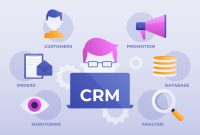For any B2B SaaS solution, SaaS interfaces with programs like Close, Quickbooks, and others have always been crucial. But now, it’s more important than ever for your SaaS tools to work together.
Anyone working in the SaaS sector is familiar with data integration. SaaS businesses started focusing on it right away. There are an average of 347 integrations across the top 15 SaaS providers.
This is easy to see with a tool like Quickbooks, which has a huge library of integrations. One of the factors contributing to their continued market dominance as the top accounting solution (with over 62% market share) is their integration approach.
So, integrations are known to be a key part of making great software, but they are often overlooked when it comes to how important they are for SaaS to reduce switching costs and close deals.
What does it cost to switch?
Switching costs are the problems a customer has to deal with when switching to a different service, product, or good provider.
In the SaaS sales process, it’s important to keep switching costs as low as possible. When a customer looks at your solution, they always want to know, ” How can I get started?”
When they ask this, they really want to know how much it will cost to switch. Imagine a business wishing to transition from HubSpot to Close as their CRM. On the other hand, they still want to use the marketing tools from HubSpot.
Integrations are now required to use SaaS solutions; they are no longer a feature that can be highlighted as a difference. Consider the scenario where email marketing automation software employs you as a salesperson. You go on a sales call and show your potential customers how the product works. They love it! When they are ready to use the product, they ask you, “So how do we get started?” with excitement. which truly means, “How can we switch from our present solution to yours?” There are two possible outcomes.
Trying to figure out how to link up with these systems.
As you learn more about SaaS integrations, you will find that a company’s API is the key scientific part of integrations.
Companies provide APIs so that other software can ask their software for data or send data from other software. Let’s break it down with an example.
Example of how an API works
You use two different kinds of software: Software A is a customer relationship management (CRM) program, and Software B is an email automation tool.
A list of possible clients with their emails is available in Software A. You want Software B to email all your prospective clients, informing them that you just launched an excellent new feature for your customers this past week. This means that software B has to get Software A’s list of contacts.
To do this, the API of Software B sends an API of Software A request to get a list of all the names and emails of the possible clients. Once Software A has located the list of names and emails, it submits the request to Software B’s API. Software B now has all the information it needs to send all those emails.
Now, this example is just a simple way to show how software APIs work. They talk about the software to people outside the company. The problem is that using a company’s API is sometimes very hard.
Open APIs
When a business chooses that only certain individuals may use its API, that API is said to be closed. It’s possible that they only offer the API to customers who pay for it or that there’s a big fee to use it.
Oracle NetSuite, for example, has a closed API that makes it hard to get data out of NetSuite. You would need to pay this yearly charge if you wanted your software to be able to connect to NetSuite since the access price is thousands of dollars.
Open APIs
An API is open if anyone can try it out and use it. Even when a company has an open API, that doesn’t mean it’s easy to use.
Salesforce is an example of a company with an open API that isn’t easy to use. Their API may be immediately tested with your own by signing up for a free developer account, making it appear simple to use.
What’s next for integrating SaaS services?
If your startup grows, you may be losing leads because you don’t support integrations with the tools they already use. After all, a growing startup always has a long list of requests for new features it needs to fulfill.
It makes sense to address the data integration issue right away by using one of the technologies mentioned above to assist your team in offering any SaaS integrations you may want or desire.
Your product will be able to serve customers better, and the sales team will also be happier because they will never have to turn people away a customer from another platform.






